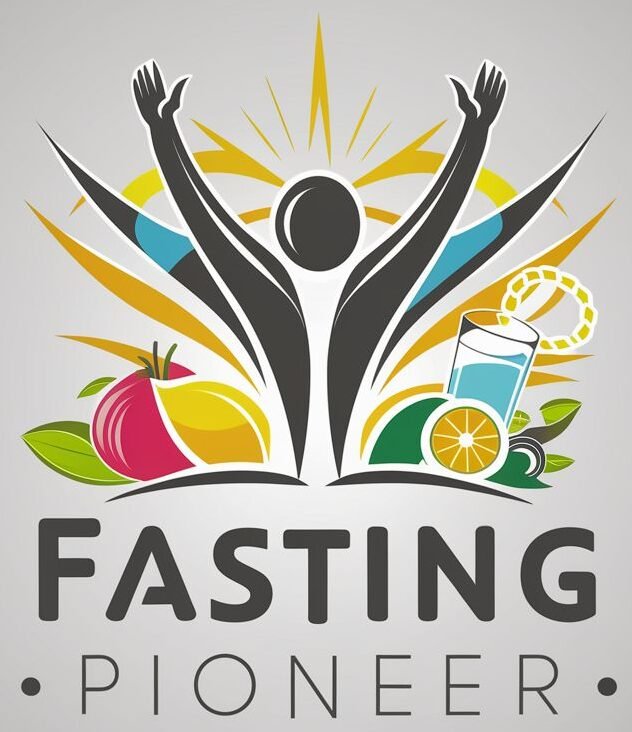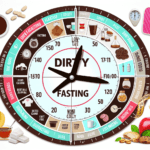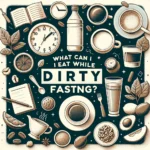So, you’ve been hearing a lot about fasting lately, but have you ever wondered what exactly “dirty fasting” is? Well, let’s break it down for you. Dirty fasting is a trendy approach to intermittent fasting that allows you to consume certain low-calorie and non-caloric beverages during your fasting window. Unlike traditional fasting methods that restrict you to water only, dirty fasting gives you a little wiggle room by allowing beverages like coffee, tea, and even diet soda. But before you dive into this fasting trend, it’s important to understand its benefits, potential drawbacks, and how it compares to other fasting methods. So, let’s explore the ins and outs of dirty fasting and see if it’s the right fit for you.
What is Dirty Fasting?
Dirty fasting is a popular method of intermittent fasting that allows for the consumption of certain foods and beverages during the fasting period. It deviates from the traditional concept of strict water-only fasting and gives individuals the flexibility to incorporate low-calorie options into their fasting routine. While clean fasting strictly prohibits any form of caloric intake, dirty fasting opens the door to some indulgences while still reaping the benefits of fasting.
Definition
Dirty fasting can be defined as a form of intermittent fasting that permits the ingestion of non-caloric or low-calorie foods and beverages during the fasting period. Unlike clean fasting, which involves consuming only water or other zero-calorie liquids, individuals who practice dirty fasting have the freedom to enjoy coffee, tea, or other low-calorie options without breaking their fast. However, it is important to note that the rules of dirty fasting can vary depending on the individual’s goals and preferences.
Difference Between Clean and Dirty Fasting
The primary distinction between clean fasting and dirty fasting lies in the allowance of caloric intake. Clean fasting emphasizes strict abstinence from any form of caloric consumption, including even the smallest amounts of food or beverages that contain calories. On the other hand, dirty fasting acknowledges that consuming minimal calories, such as those found in black coffee or herbal tea, does not significantly disrupt the fasting state. This subtle difference attracts those who find clean fasting too restrictive and seek a more flexible approach to intermittent fasting.
Dirty Fasting Methods
Dirty fasting encompasses various methods, each with its own set of rules and guidelines. Some popular dirty fasting methods include the Warrior Diet, the 16:8 method, and the 5:2 diet. The Warrior Diet involves a daily eating pattern of fasting for 20 hours and consuming one large meal within a 4-hour eating window. The 16:8 method entails fasting for 16 hours and allowing an 8-hour eating window. Lastly, the 5:2 diet involves eating normally for five days and limiting calorie intake to 500-600 calories for two non-consecutive days. These methods offer individuals the flexibility to incorporate some food or beverages into their fasting routine while still achieving their desired fasting goals.
Consumption of Calories
One of the key aspects of dirty fasting is the allowance of limited caloric intake during the fasting period. While clean fasting strictly prohibits any caloric consumption, dirty fasting permits the consumption of minimal calories. Typically, these calories come from beverages like coffee, tea, or even bone broth. It is important to note that the calorie content of these drinks should be kept to a minimum to ensure the benefits of fasting are still obtained. It is recommended to opt for black coffee or unsweetened tea to avoid excessive calorie intake while dirty fasting.
Allowance of Certain Foods
Dirty fasting also allows for the consumption of certain low-calorie foods that do not significantly impact the fasting state. This includes items like green leafy vegetables, lean proteins, and healthy fats. These foods can be consumed during the eating window of a specific dirty fasting method, providing individuals with added nutritional benefits and satiety. However, it is crucial to remember that the quantity and quality of these foods should be carefully considered to prevent excessive caloric intake and to maintain the fasting state.
Effect on Insulin
One of the benefits of dirty fasting is its potential to help regulate insulin levels. Insulin is a hormone that plays a crucial role in blood sugar regulation. By allowing minimal caloric intake during the fasting period, dirty fasting keeps insulin levels relatively stable. This can be beneficial for individuals seeking to improve insulin sensitivity and manage conditions such as prediabetes or type 2 diabetes. However, it is important to consult with a healthcare professional before incorporating dirty fasting into any diabetes management plan to ensure it aligns with personal health goals.
Benefits of Dirty Fasting
Dirty fasting offers several potential benefits. Firstly, it provides a more flexible approach to intermittent fasting, making it more sustainable for individuals who find clean fasting too restrictive or challenging to adhere to. Additionally, dirty fasting allows for the consumption of low-calorie foods and beverages, which can help alleviate hunger pangs and cravings, making the fasting period more manageable. Furthermore, dirty fasting may have positive effects on insulin regulation, weight management, and overall metabolic health. It may also offer the convenience of fitting fasting into a busy lifestyle without feeling deprived of certain foods or drinks.
Drawbacks of Dirty Fasting
Despite its benefits, dirty fasting may not be suitable for everyone. One potential drawback is the risk of consuming too many calories during the fasting window, which can impede weight loss goals or even cause weight gain. Some individuals may also find it difficult to exercise self-control and stick to low-calorie options, leading to excessive calorie intake. Moreover, dirty fasting may not be suitable for those with certain health conditions, such as gastrointestinal disorders or metabolic disorders, as the inclusion of certain foods or beverages during the fasting period may trigger symptoms or worsen the condition. It is crucial to listen to your body and consult with a healthcare professional to determine if dirty fasting is appropriate for your individual circumstances.
Conclusion
Dirty fasting offers a more flexible and realistic approach to intermittent fasting, allowing for the consumption of certain low-calorie foods and beverages during the fasting period. It deviates from traditional clean fasting methods but still provides numerous benefits, including improved insulin regulation, increased satiety, and simplified weight management. However, it is important to navigate dirty fasting with caution to avoid excessive calorie consumption and to ensure it aligns with individual health goals. As with any dietary approach, it is always recommended to consult with a healthcare professional before embarking on a dirty fasting journey to maximize safety and effectiveness.







